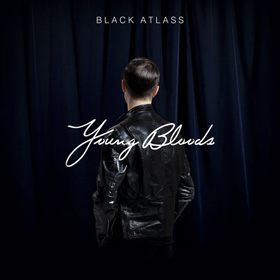Yōkaii Daizukai by Shigeru Mizuki
Shigeru Mizuki is a legendary manga artist who is known for his depictions of yōkai, supernatural monsters from Japanese folklore.
Mizuki’s Yōkaii Daizukai is an illustrated guide to 85 ghastly creatures of legend, complete with anatomical diagrams and field notes. Unfortunately there doesn’t appear to be an English version in print, but the illustrations themselves are worth a thousand words.
The images and descriptions below are via Aeron Alfrey‘s creepy and delightful site Monster Brains.
“The Kuro-kamikiri (“black hair cutter”) is a large, black-haired creature that sneaks up on women in the street at night and surreptitiously cuts off their hair. Anatomical features include a brain wired for stealth and trickery, razor-sharp claws, a long, coiling tongue covered in tiny hair-grabbing spines, and a sac for storing sleeping powder used to knock out victims. The digestive system includes an organ that produces a hair-dissolving fluid, as well as an organ with finger-like projections that thump the sides of the intestines to aid digestion.”
“The Hyōsube, a child-sized river monster (a relative of the kappa) from Kyushu that lives in underwater caves, ventures onto land at night to eat rice plants. The monster has a relatively small brain, a nervous system specialized in detecting the presence of humans, thick rubbery skin, sharp claws, two small stomachs (one for rice grains and one for fish), a large sac for storing surplus food, and two large oxygen sacs for emergency use. A pair of rotating bone coils produce an illness-inducing bacteria that the monster sprinkles on unsuspecting humans.”
“The Makura-gaeshi (“pillow-mover”) is a soul-stealing prankster known for moving pillows around while people sleep. The creature is invisible to adults and can only be seen by children. Anatomical features include an organ for storing souls stolen from children, another for converting the souls to energy and supplying it to the rest of the body, and a pouch containing magical sand that puts people to sleep when it gets in the eyes. In addition, the monster has two brains — one for devising pranks, and one for creating rainbow-colored light that it emits through its eyes.”
“The Doro-ta-bō (“muddy rice field man”), a monster found in muddy rice fields, is said to be the restless spirit of a hard-working farmer whose lazy son sold his land after he died. The monster is often heard yelling, “Give me back my rice field!” Anatomical features include a gelatinous lower body that merges into the earth, a ‘mud sac’ that draws nourishment from the soil, lungs that allow the creature to breathe when buried, and an organ that converts the Doro-ta-bō’s resentment into energy that heats up his muddy spit. One eyeball remains hidden under the skin until the monster encounters the owner of the rice field, at which time the eye emerges and emits a strange, disorienting light.”
“The Mannen-dake (“10,000-year bamboo”) is a bamboo-like monster that feeds on the souls of lost travelers camping in the woods. Anatomical features include a series of tubes that produce air that causes travelers to lose their way, syringe-like fingers the monster inserts into victims to suck out their souls, and a sac that holds the stolen souls.”
“The Fukuro-sage — a type of tanuki (raccoon dog) found in Nagano prefecture and Shikoku — has the ability to shapeshift into a sake bottle, which is typically seen rolling down sloping streets. The bottle may pose a danger to people who try to follow it downhill, as it may lead them off a cliff or into a ditch. The Fukuro-sage usually wears a large potato leaf or fern leaf on its head and carries a bag made from human skin. The bag contains a bottle of poison sake. Anatomical features include a stomach that turns food into sake, a sac for storing poison that it mixes into drinks, and a pouch that holds sake lees. The Fukuro-sage’s urine has a powerful smell that can disorient humans and render insects and small animals unconscious.”
“The Hyōsube, a child-sized river monster (a relative of the kappa) from Kyushu that lives in underwater caves, ventures onto land at night to eat rice plants. The monster has a relatively small brain, a nervous system specialized in detecting the presence of humans, thick rubbery skin, sharp claws, two small stomachs (one for rice grains and one for fish), a large sac for storing surplus food, and two large oxygen sacs for emergency use. A pair of rotating bone coils produce an illness-inducing bacteria that the monster sprinkles on unsuspecting humans.”
“Yanagi-baba (“willow witch”) is the spirit of 1,000-year-old willow tree. Anatomical features include long, green hair resembling leafy willow branches, wrinkled bark-like skin, a stomach that supplies nourishment directly to the tree roots, a sac for storing tree sap, and a cane cut from the wood of the old tree. Although Yanagi-baba is relatively harmless, she is known to harass passersby by snatching umbrellas into her hair, blowing fog out through her nose, and spitting tree sap.”
“The Bisha-ga-tsuku is a soul-stealing creature encountered on dark snowy nights in northern Japan. The monster — which maintains a body temperature of -150 degrees Celsius — is constantly hidden behind a fog of condensation, but its presence can be detected by the characteristic wet, slushy sound (“bisha-bisha”) it makes. Anatomical features include feelers that inhale human souls and cold air, a sac for storing the sounds of beating human hearts, and a brain that emits a fear-inducing aura. The Bisha-ga-tsuku reproduces by combining the stolen human souls with the cold air it inhales.”
Additional scans from the book:
Via Monster Brains



















